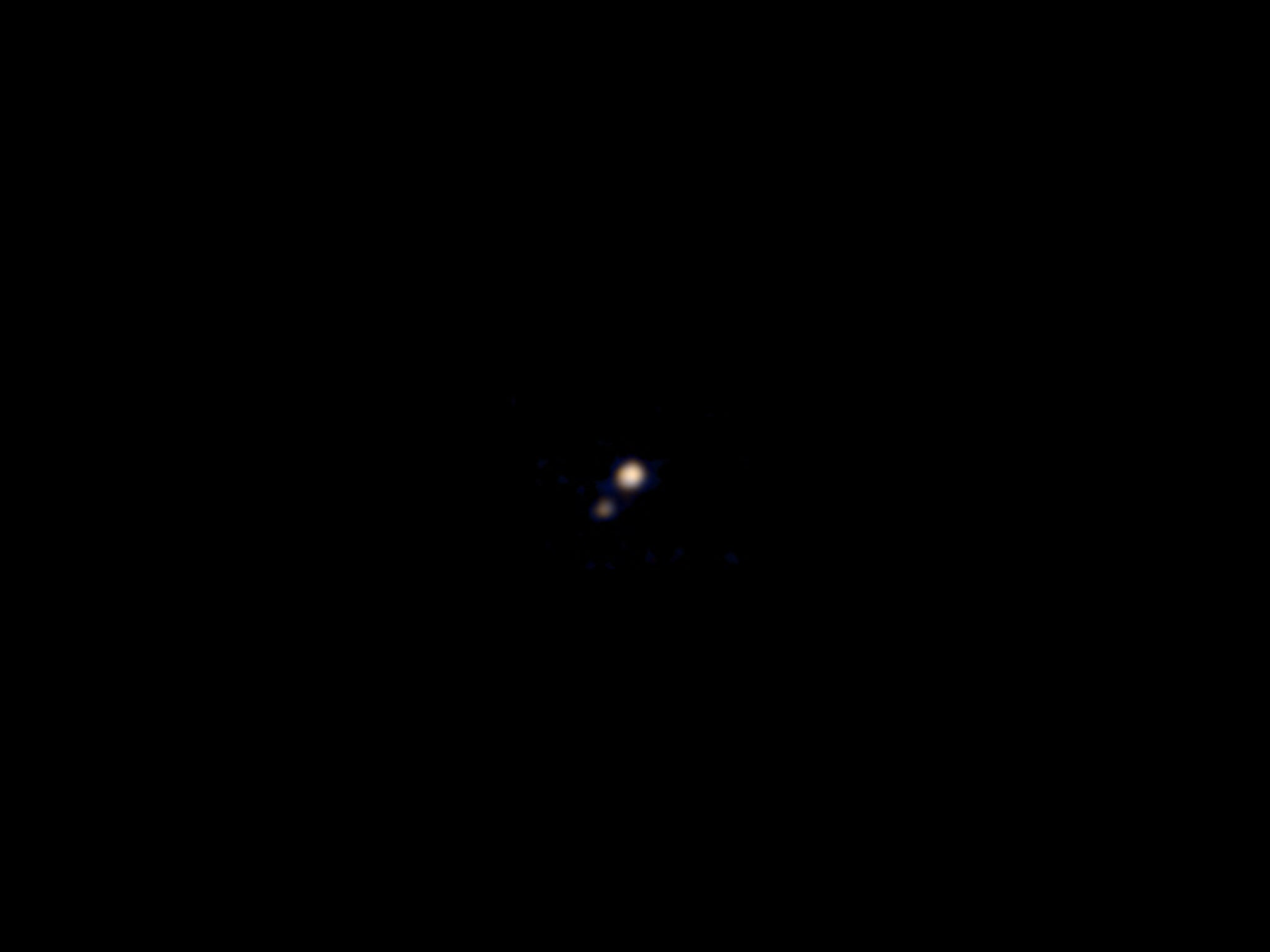New Horizons Pluto flyby: last picture from probe shows dwarf planet in stunning detail
Just three months ago, Nasa was celebrating having been able to take a colour picture of the planet at all

Your support helps us to tell the story
From reproductive rights to climate change to Big Tech, The Independent is on the ground when the story is developing. Whether it's investigating the financials of Elon Musk's pro-Trump PAC or producing our latest documentary, 'The A Word', which shines a light on the American women fighting for reproductive rights, we know how important it is to parse out the facts from the messaging.
At such a critical moment in US history, we need reporters on the ground. Your donation allows us to keep sending journalists to speak to both sides of the story.
The Independent is trusted by Americans across the entire political spectrum. And unlike many other quality news outlets, we choose not to lock Americans out of our reporting and analysis with paywalls. We believe quality journalism should be available to everyone, paid for by those who can afford it.
Your support makes all the difference.The New Horizons craft has sent back stunningly detailed pictures of Pluto taken just before it began its historic flyby, only months after Nasa was celebrating seeing the dwarf planet in colour at all.
In April, Nasa released pictures showing just two tiny, imprecise dots — Pluto and its largest moon, Charon, though they wouldn't have been recognisable to anyone but experts. Now, the agency has released finely-detailed images of the dwarf planet, showing its geological features and its large, plain "heart".
The picture shows the big “heart” that has been described as being on the side of the dwarf planet. Others have said that the large light part towards the bottom looks a little like the Disney dog that shares its name with the planet.
The most-detailed ever picture was taken 476,000 miles from the dwarf planet, after New Horizons had travelled for nine years and over three billion miles to get there. It shows in fine detail some of the planet's geological features — the same ones that scientists will be poring over for years to come in an attempt to understand the small rock.
Scientists will do so using the information sent back from the New Horizons craft, which is fitted out with sensors and cameras. The flyby, which was the riskiest part of a highly precise mission, will give the closest look at a dwarf planet that until now has been very difficult to study at all.
The data will take 16 months to send back in full. Nasa hasn't even been able to hear back from the craft to say that it has survived the flyby — and will be waiting hours before it receives the first useful information, downloaded at a very slow rate.
But the information sent back by the craft have already led to surprising discoveries. Just this week, Nasa announced that it had found that Pluto was much smaller than originally thought, and that it might be made up of different things.
Nasa posted the last picture before the flyby on its Instagram, minutes before the flyby. Nasa chose to do so to help it “engage new audiences”, its social media manager told Wired — and it seems to have done, already reaching hundreds of thousands of likes.
Join our commenting forum
Join thought-provoking conversations, follow other Independent readers and see their replies
Comments